This one is a really nice piece of wood with lots of pin knots, little holes from dead branches or thorns, beautiful curves and swellings. The bow is fumed, I couldn’t resist.
Only an arrow mark (brass) and nearly transparent tip overlays (cow) is on the bow.
dw/dl: 53#/26”
ntn: 60½”
bh: 5”
max. w.: 1“
reflexn: ½”
mass: 485 gram
asymmetrical
bendy handle
08”: 08,9
10”: 14,6 (+5,7)
12”: 19,4 (+4,8)
14”: 24,1 (+4,7)
16”: 28,4 (+4,3)
18”: 32,7 (+4,3)
20”: 37,1 (+4,4)
22”: 42,0 (+4,9)
24”: 47,0 (+5,0)
26”: 53,0 (+6,0)
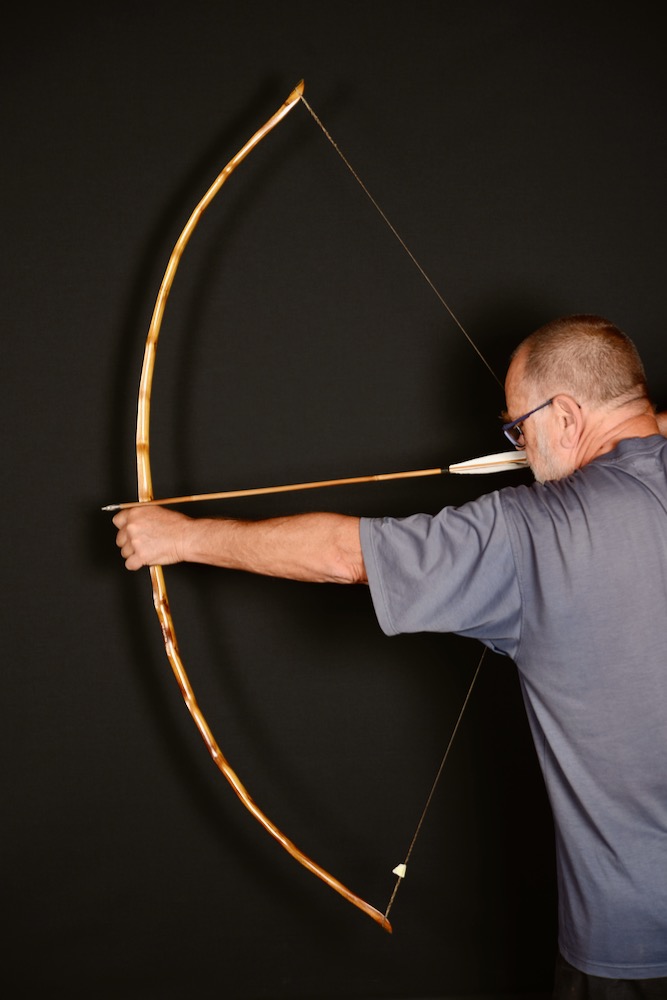
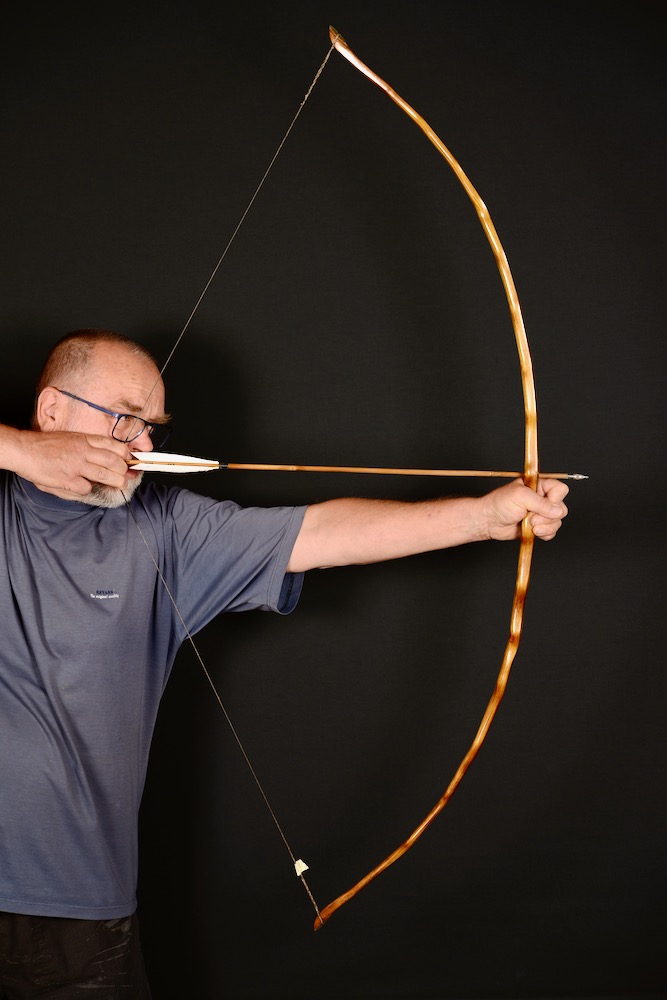
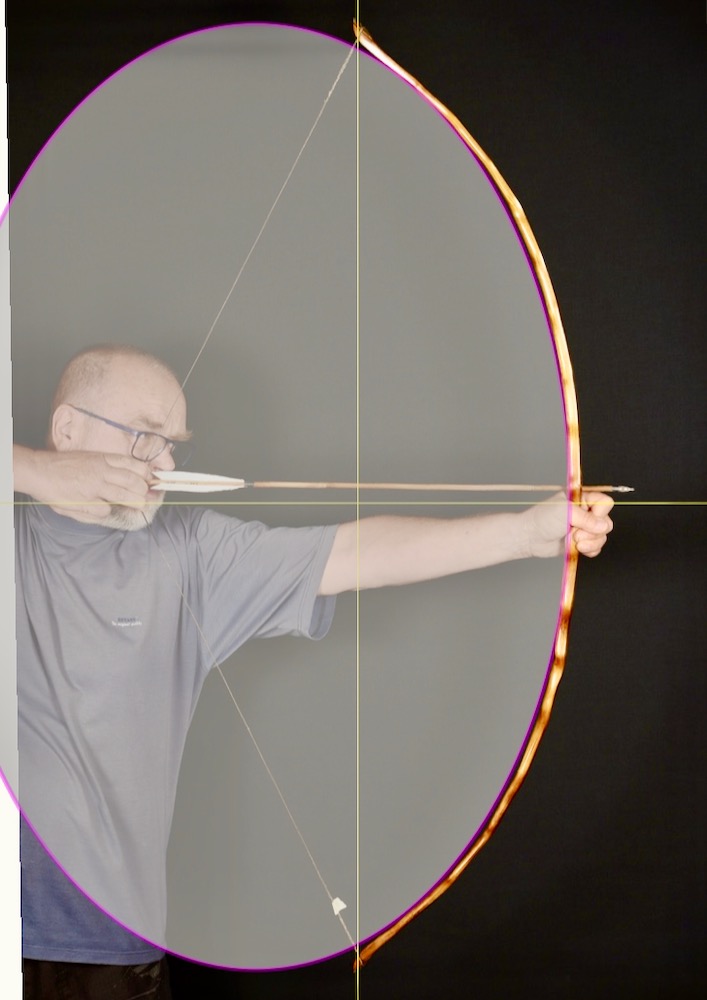




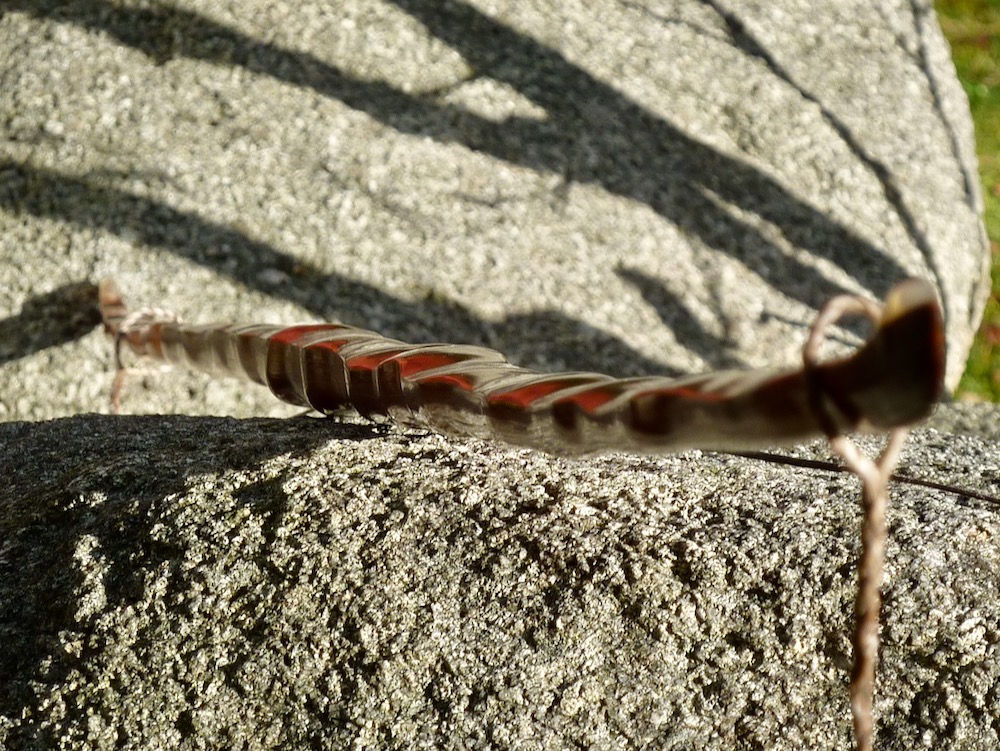
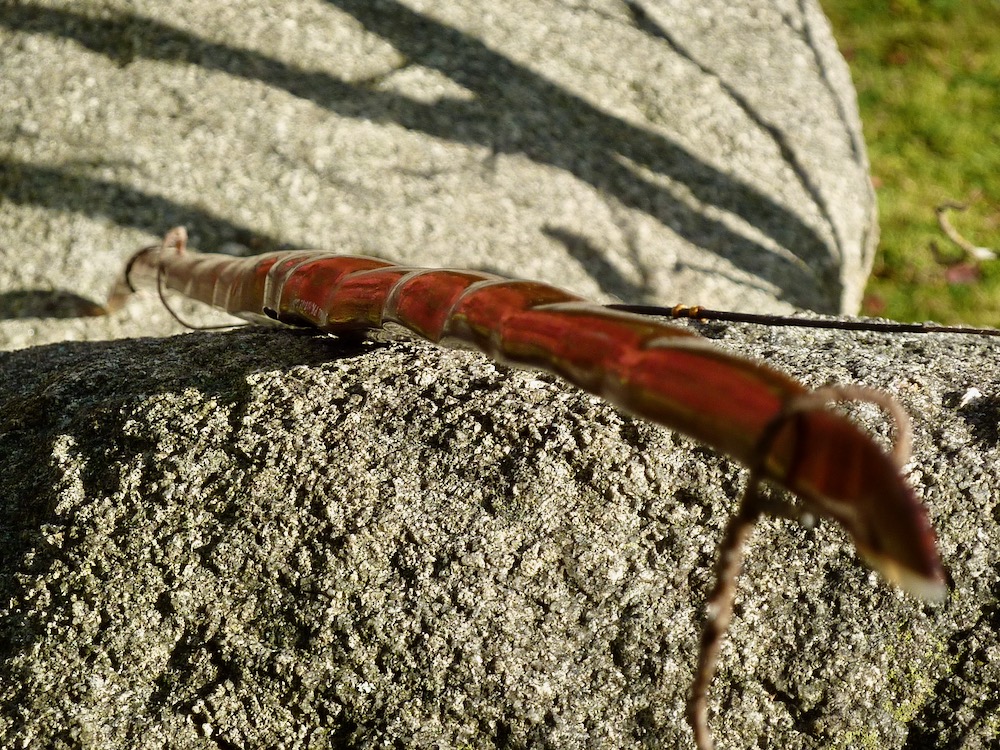
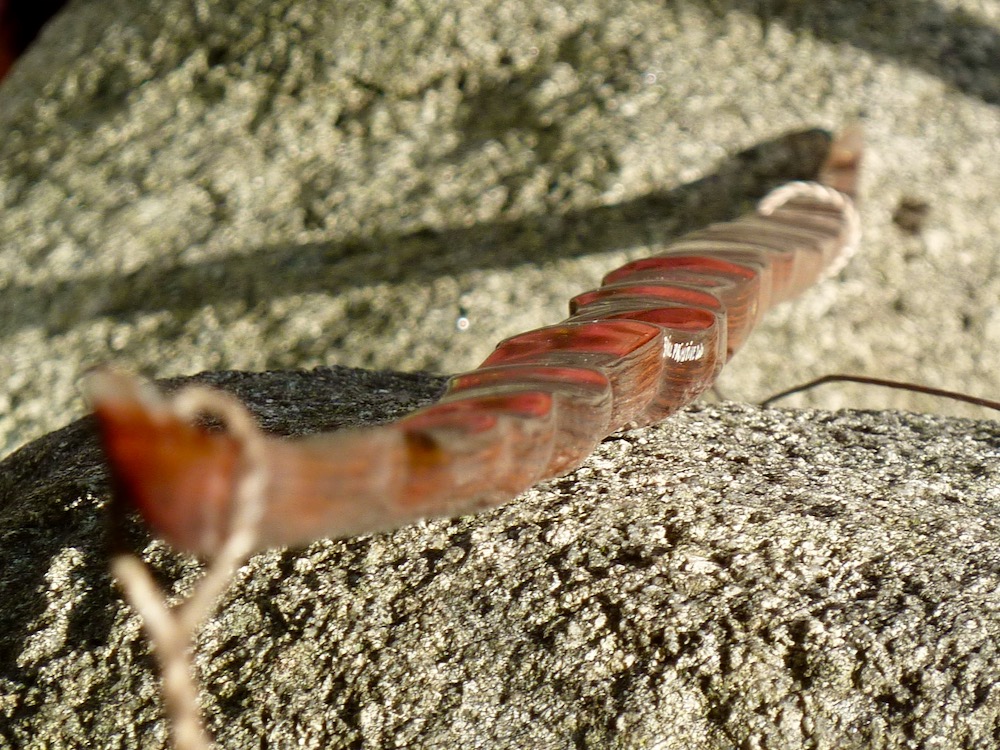
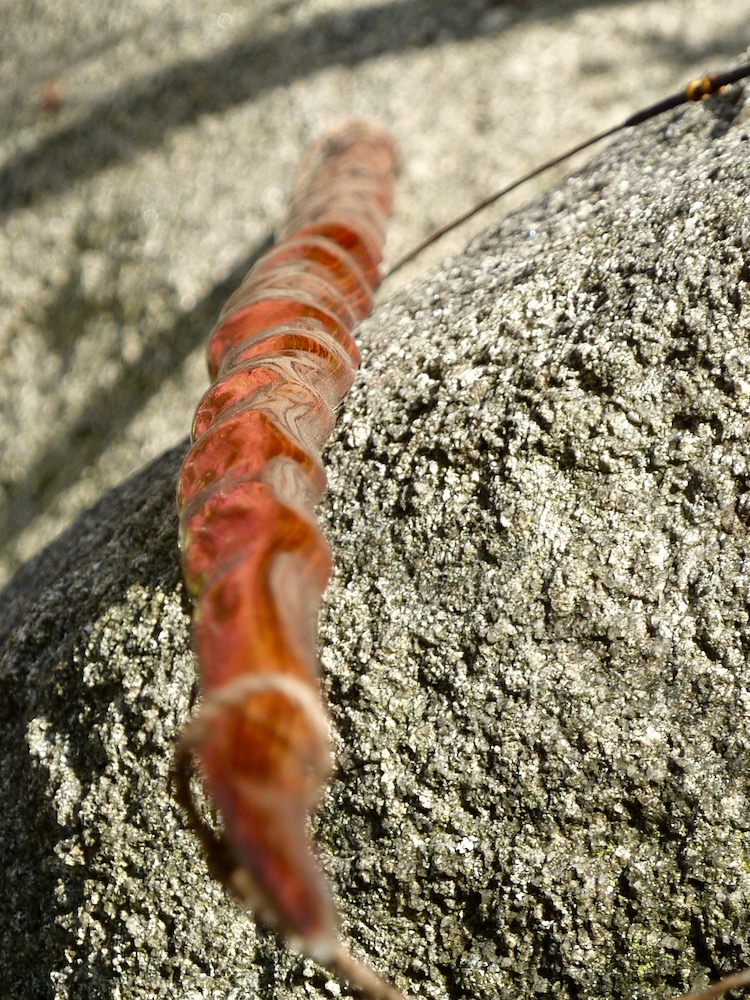
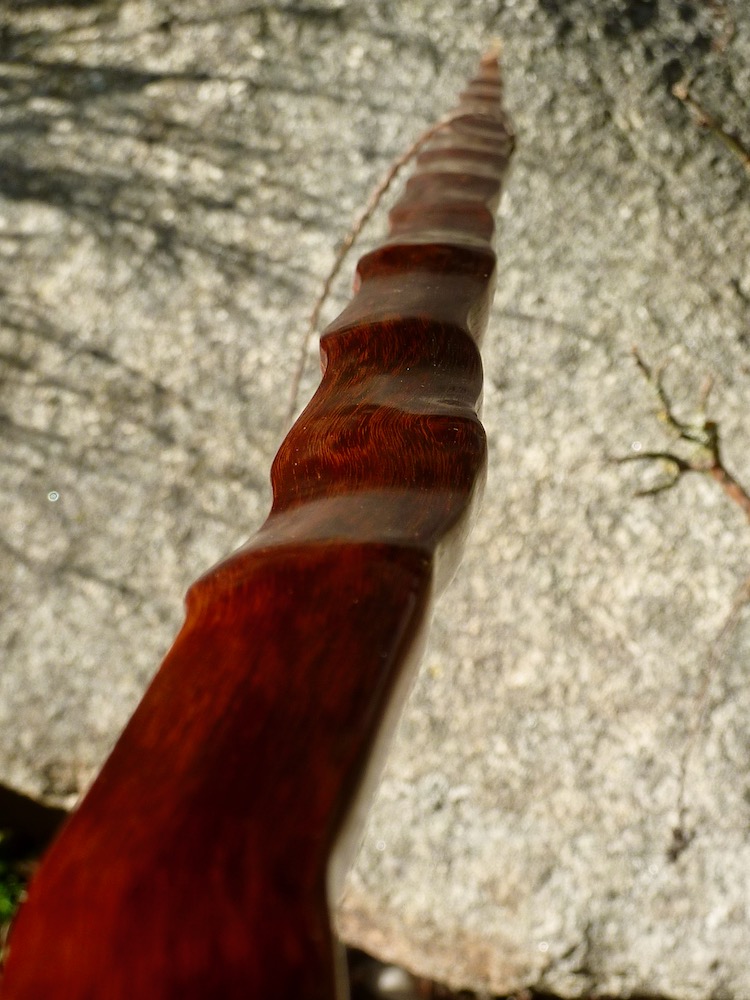
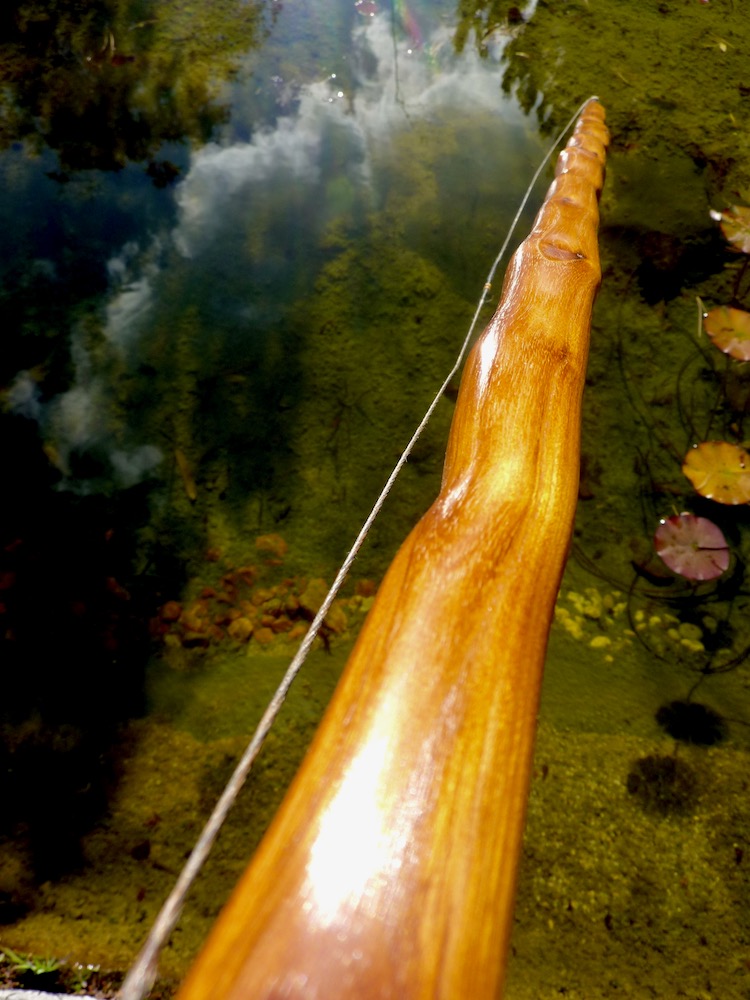
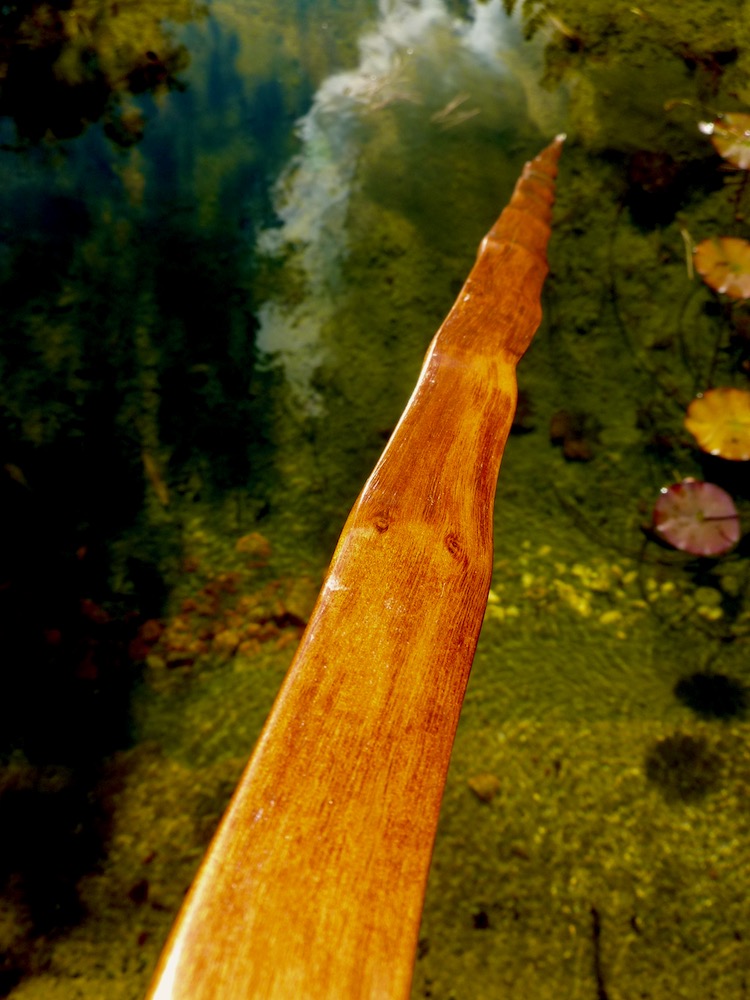
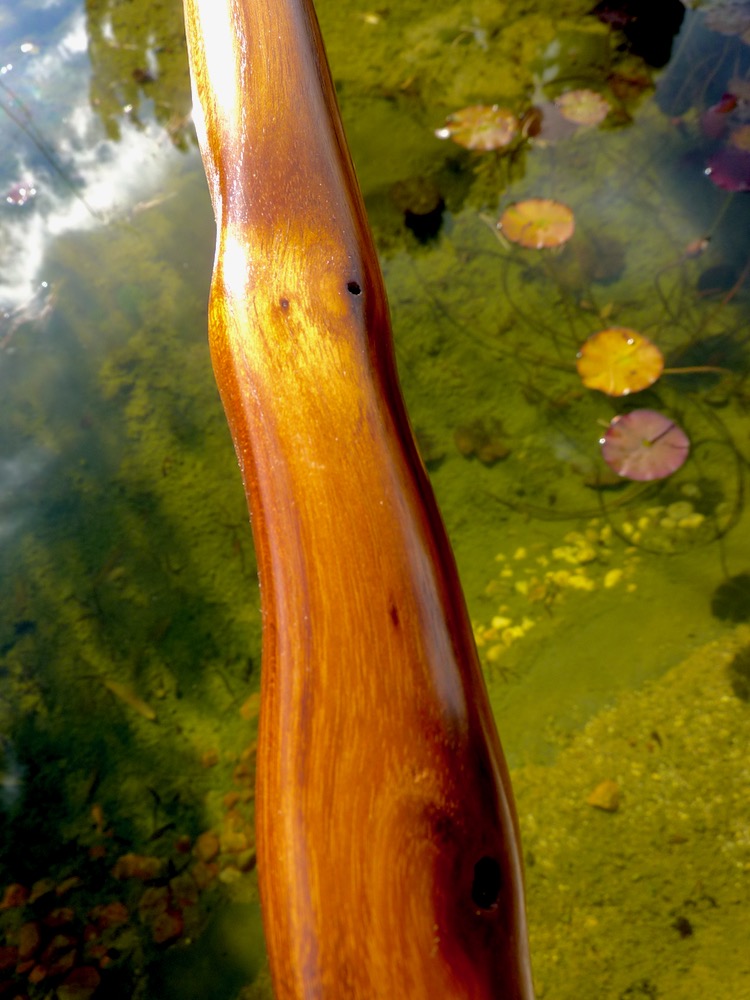
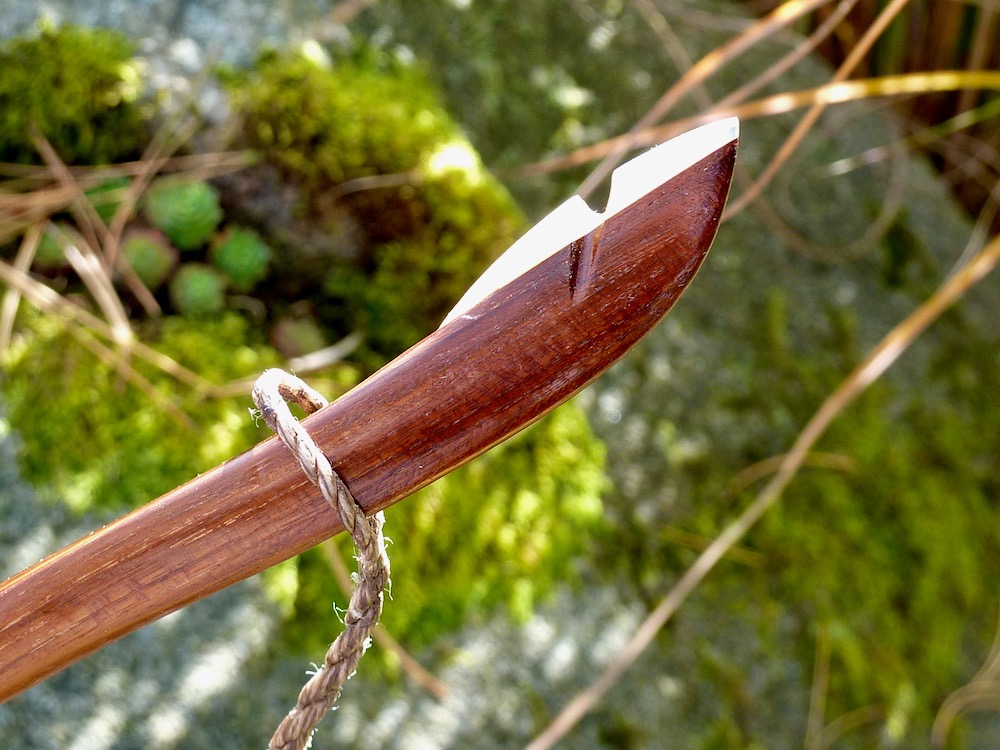
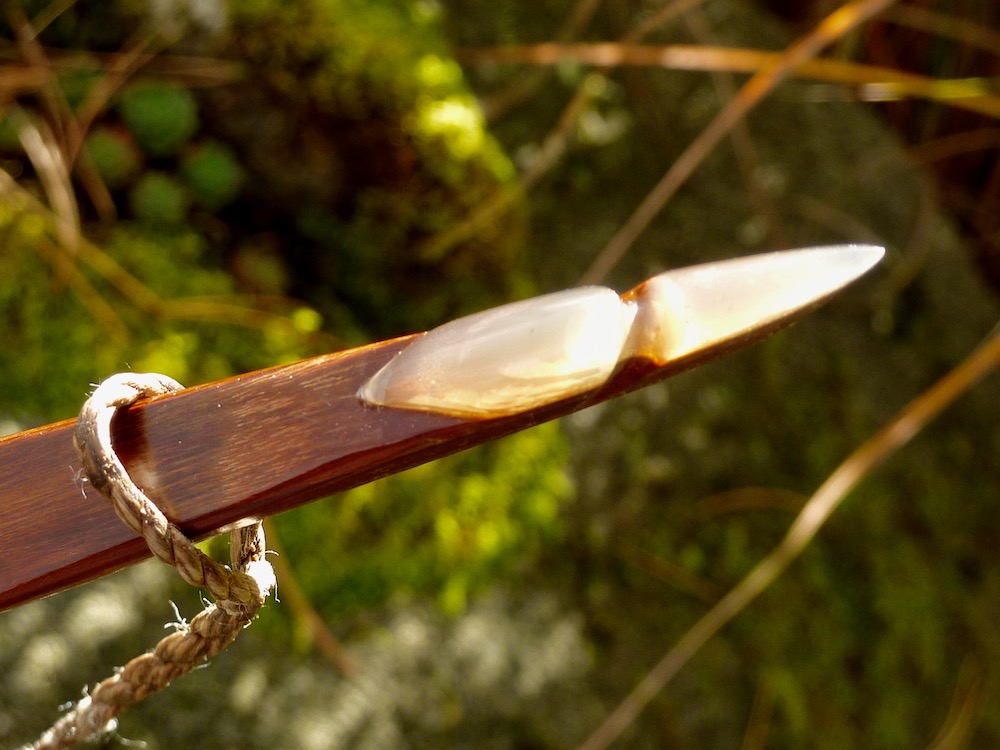
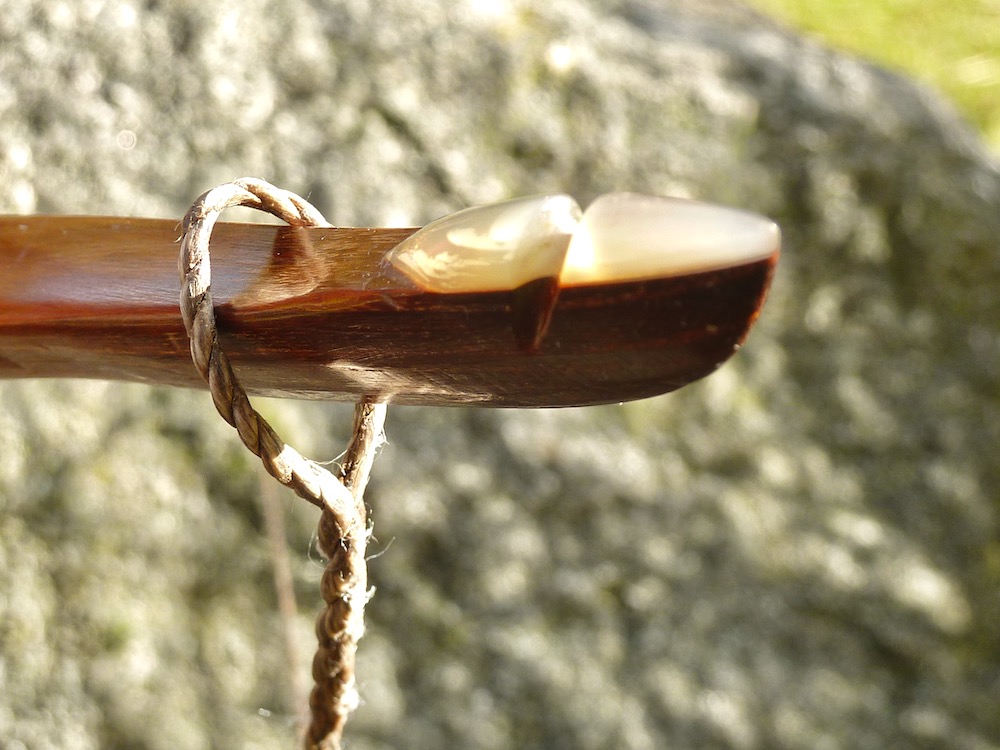
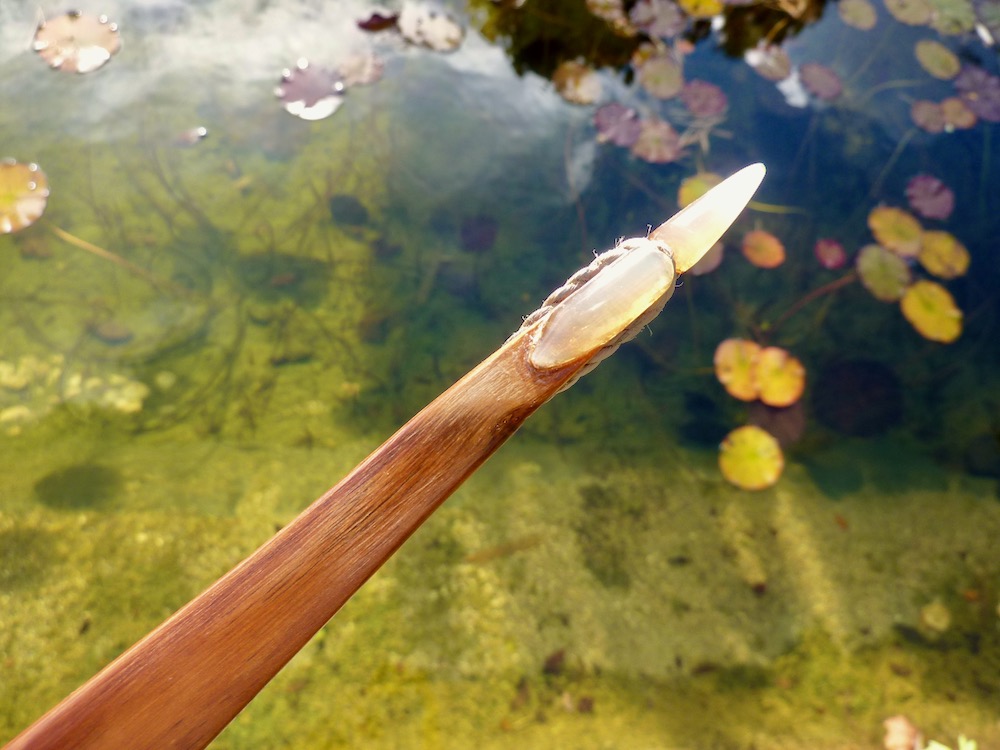
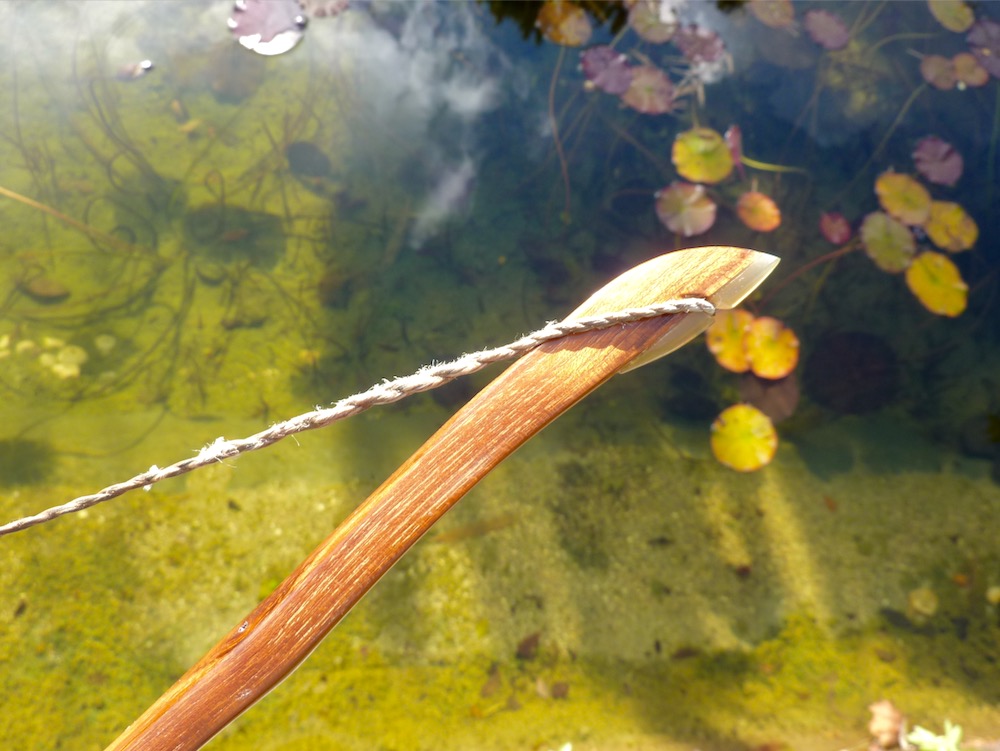


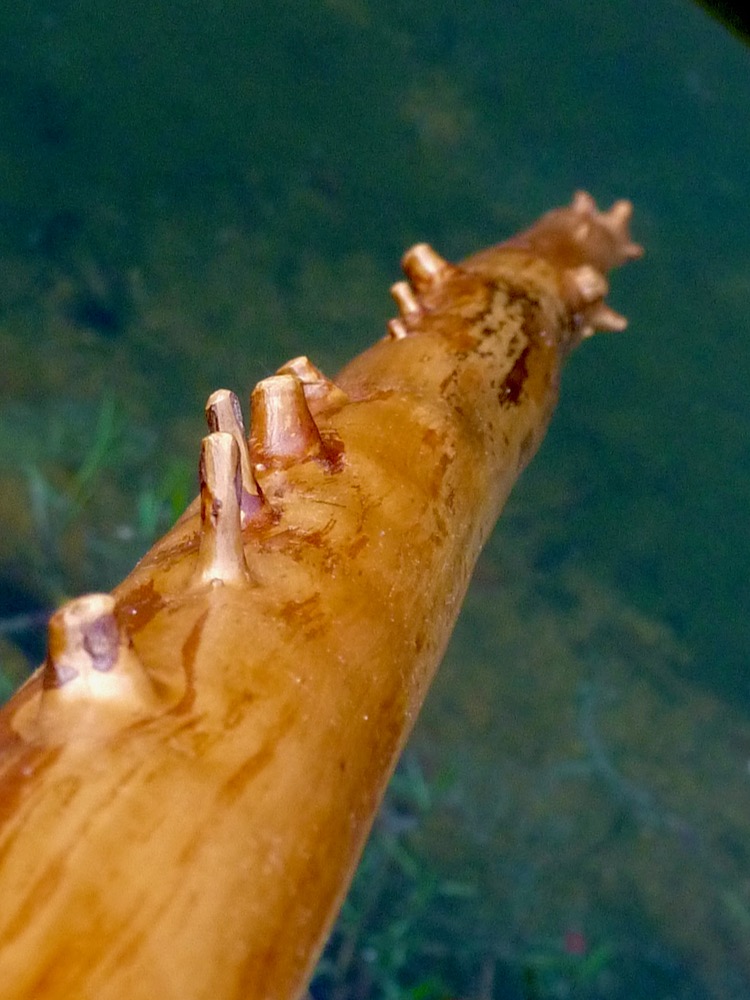
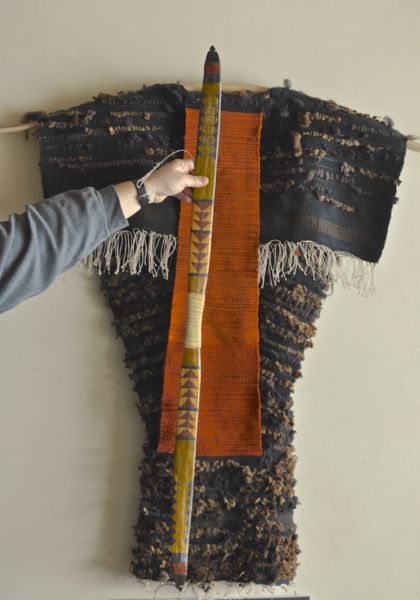
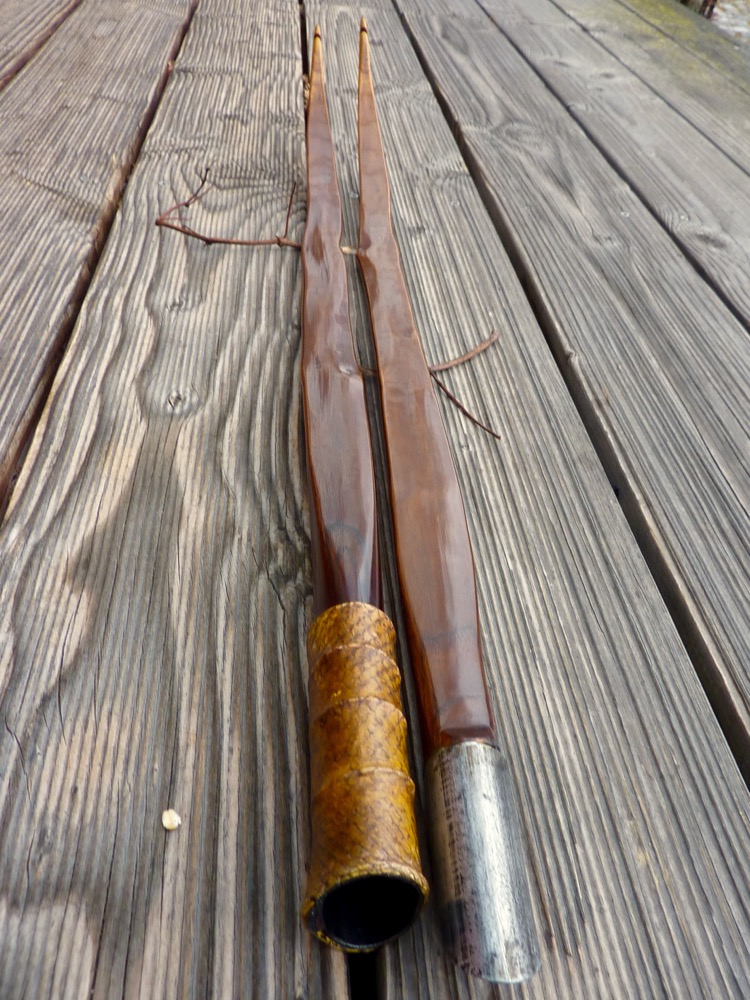
2 Comments
Hi Simon. It’s Ricardo from Portugal, I wonder what are your tips to chase a ring in a bow like this? I’ve a yew stave with humps and bumps on the back and also big knots and lots of sap wood, I wonder if I can try to reduce sap wood with all that character. Also, any advice on working elder bows in general? thanks. Big hug, your bows are great inspiration
Hi Ricardo,
chasing a ring on staves like this can be tricky. I first work roughly down to one or two rings above the final ring. All the humps and bumps are now visible. In a second step I work down to the final ring with goose neck scraper and files. Sometimes a quick sanding helps to make sure that you are on the right track.
Working with elder is simple. You don’t need to chase a ring – it is the first under the bark. For dimensions have a look on my elder bows here, use the search function search for elder and you get all.
The most important thing is to have a suitable stave, as most elder are twisted like hell.
Have a nice day and good luck with your projects!
Simon